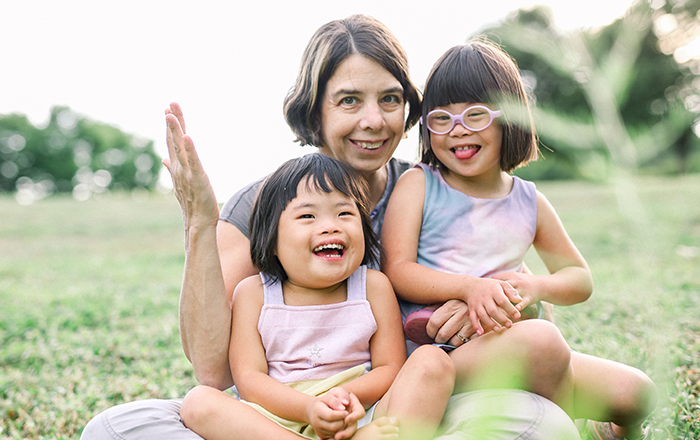My wife, Laurie, and I aren’t always in the mood to share our family’s story. Countless strangers have asked us, “Are they yours? Did you adopt them?”
When we first became a multiracial family, we took this kind of questioning as an opportunity to educate. Everyone who approached us got an earful about the plight of children in foster care. They nodded their heads, and glanced at their watches, while we nattered on. Laurie and I assumed the best in people, but we quickly learned that people were usually nosier than they were interested in adoption.
Finally, another adoptive family we knew told us their story. “You don’t owe the world an explanation about your family,” they said. “It’s your story, and it is nobody else’s business.” Laurie and I sighed with relief. Our new approach to “Are they yours?” became a “yes,” and we left it at that.
One day, not long after that revelation, Laurie and the kids were eating at Chick-fil-A. A woman approached them and asked, “Are they yours?” Laurie later told me that she had silently huffed and thought, “I just want to have lunch with my kids in peace.” But she feigned patience and said yes.
The woman smiled and said, “My two sons were adopted. They’re African-American, too.”
“Oh?” Laurie said, perking up.
She continued. “My husband and I head a ministry for adoptive families at our church. Every family in our group has Caucasian parents who have adopted African-American children. We’d love to invite you.”
Going New Places
Laurie and I had taken our kids to a few events for adoptive families of color. But, before that first event with “Families Like Us,” we’d never seen so many families who looked like ours.
Over the next few months, we got to know the parents and their kids at other events. The bond we shared was unlike anything we’d had with any other group. Mothers talked about their struggles to moisturize their sons’ skin and to manage their daughters’ braids. Fathers talked about disciplining their kids in public. Other fathers had felt the same judgmental eyes on them. Our son, Isaac, who stands out—not just because of his color, but because he is loud and wild—blended right in with the other children.
Laurie and I knew that surrounding our children with children who look like them is important. Now we know the importance of surrounding ourselves with families who don’t look like each other.
Last January, before we became involved with Families Like Us, we took our kids to our city’s Martin Luther King, Jr., Parade. Laurie and I assumed we would be among the few Caucasians attending the celebration. I would have been self-conscious had people stared at us, but no one did. Instead, the family next to us chatted with us, not once asking, “Are they yours?” Some kids asked Isaac to play. Even so, I couldn’t help but notice that all the families around us matched one another. My mind flashed forward to the day when Isaac will notice the same thing.
For now, we’re at home in our circle of mixed-race families. Since Laurie’s encounter at Chick-fil-A, I’ve been on the lookout, at restaurants, libraries, malls, for multiracial kids and their guarded parents. “Hi,” I’ve learned to say. “Are those your kids?” After a roll of the eyes, they say yes and wait to see which nosy adoption question I will ask. That’s when I move in for the kill.



